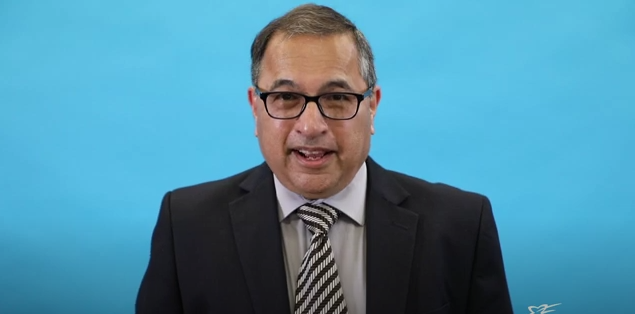Things are going well enough in York Region that we could move into the orange-restrict zone by March 15 — and it appears that the region will avoid a dreaded third wave of the COVID-19 pandemic, the region's medical officer of health predicts.
Dr. Karim Kurji told regional councillors at their meeting today that York Region's COVID-19 case numbers are looking good, real good.
"The incidence rate of COVID-19 has been dropping, it's now at about 53 per 100,000. The seven-day average for cases is at about 90 per day, and our positivity rate has been dropping to about 3.5 per cent. Institutional outbreaks, hospitalizations of residents and ICU admissions have all been dropping when it comes to York Region residents," said Kurji.
Perhaps most importantly, growth of the new virus variants has slowed significantly. The time it takes for the number of cases to double has gone from five days to 14. So while the variants are expected to eventually supplant the original or "classic" strain of COVID-19, it will happen slowly.
If so, it could mean there may not be a third wave of the pandemic.
"I certainly don't think there is any likelihood of a third wave, in York Region anyway," said Kurji.
If those trends hold and there is no major spike in cases by the time York Region hits the two-week mark in the current red-control zone on March 8, Kurji said he believes that the province will agree to transition the region to the orange-restrict zone.
"Next week, we can assess the situation very carefully and have further discussions with the chief medical officer of health. The idea then would be to move into the orange zone on March 15, if everything is OK," he said.
Kurji said the health unit would still continue monitoring the data closely and would implement additional restrictions if necessary.
Kurji noted that not everyone in the public health field is likely to agree with that plan. He noted a "majority" of experts believe it is premature to be reopening up and that some would like to see the Greater Toronto Area managed as a single region. But Kurji takes a different view.
"I don't believe that's right, because if that was the case, we would not make any progress for months," he said.
"I have different opinions backed by the data, and I believe we have navigated our way through the challenges nicely, and if we continue to follow the data, we have a good chance of getting into the orange zone by March 15 while still getting more people vaccinated."
Moving to the orange-restrict zone would mean:
- social gatherings of up to 10 indoors and 25 outdoors
- public events of 50 people indoors and 100 people outdoors
- religious services can have 30 per cent of a room's capacity or 100 people outside
- Restaurants can have up to 50 people indoors provided distances are maintained, and four people per table
- Fitness businesses could have 50 people provided distances are maintained, 10 people per indoor class
- Meeting venues could reopen with an indoor capacity of 50 people
- Cinema and theatres can reopen with a max capacity of 50 people and mandatory masks

